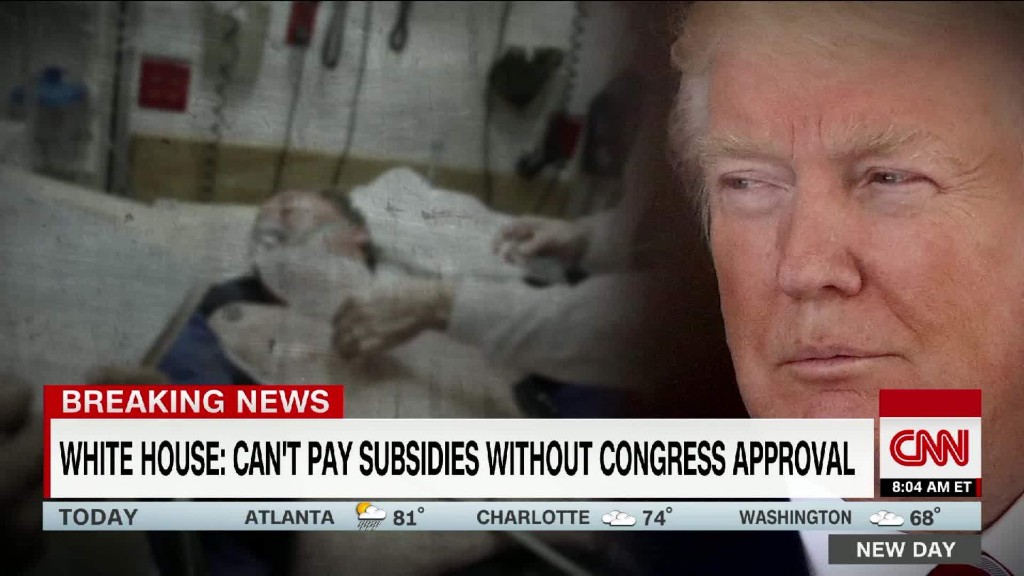
Happy 26th birthday! It's time to buy health insurance.
Whether you're aging off your parents' plan or want to leave the nest early, buying health insurance can seem daunting.
Should you purchase a high- or low-deductible plan? And what's a deductible, anyway?
The process will look different for everyone, but we're all on the hook. You'll be hit with a tax penalty if you fail to buy coverage.
Step 1: Create a game plan
If you're turning 26 and are still on your parents' insurance, figure out exactly when you'll lose coverage.
You'll have until the end of your 26th year to buy a plan if your folks are covered under the Affordable Care Act, even if your birthday falls mid-year.
If your parents receive health insurance through their jobs, your coverage may stop at the end of the month in which your 26th birthday falls -- or as soon as the day of your birthday.
Next, pick a coverage source. If you're planning to buy insurance through your employer, you can take advantage of special enrollment.
Related: Actually, Trump is raising health insurance premiums
Losing your parents' health insurance is considered a "qualifying life event" (as is having a baby, getting married, etc.). Corporations must allow you to buy coverage whenever such an event happens.
If your job doesn't offer health insurance, see if you can stay on your parents' plan for a few more years, suggests Elizabeth Gavino, a New York-based health insurance consultant and the owner of Lewin & Gavino. Insurers in certain states will allow you to stay on until age 29 or 31.
If you're signing up for Obamacare, you could also enroll in your state's exchange during special enrollment, which gives you 60 days to pick a plan after you lose coverage. You'll have to pay a penalty if you miss the deadline. If your state doesn't have its own Obamacare exchange, you'll have to use the federal program.
If you're planning to come off your parents' plan before 26, you'll need to apply during annual open enrollment. Companies typically hold open enrollment in the fall, while the U.S. government begins accepting applications on Nov. 1.
Step 2: Conduct a self check-up
Determine how much coverage you need -- and what you can afford.
If you're relatively healthy and only visit the doctor once or twice a year, your best bet is a high-deductible plan. In Obamacare, that's the Bronze or Silver plan.
You'll pay more at the doctor's office before your insurance starts helping out, but your monthly payments, or premiums, will be lower.
Related: Insurers are thriving, with or without Obamacare
If you visit the doctor often and can afford to pay a higher premium, you may want to consider a low-deductible plan. Those are the the Gold and Platinum plans if you're signing up for Obamacare.
Your office visits will be cheaper, which can be a big help if you tend to rack up medical bills. In turn, your premiums will be higher.
Step 3: Consider all the variables
Deductibles and premiums aren't the only factors to consider when choosing a plan.
Take into account each plan's copays, or the amount you're responsible for when you visit the doctor, says Gavino.
Co-insurance, or the amount you pay after meeting your deductible, will also differ with each plan, as will out-of-pocket maximums, or the most you'll pay during a catastrophic health year before your insurance takes over.
Related: How Trump's executive order can hurt those with pre-existing conditions
You may also need to choose between two types of networks: PPOs and HMOs.
A PPO gives you access to a broader network of doctors than an HMO, but PPOs generally cost more.
"Research what insurance companies your primary care physician accepts before purchasing a plan so as to not lose access to your doctor," says Ashley Foster, a certified financial planner in Texas.
Some plans also offer special accounts that can help you pay for health-related expenses.
Health Savings Accounts, or HSAs, are available with high-deductible plans.
Related: New Trump birth control rules could undermine Obamacare gains
You can contribute pre-tax money to an HSA to help pay for your deductible and other out-of-pocket costs. Those contributions are invested in stocks, bonds and more, just like with a 401(k). But be careful: If you use your HSA to pay for non-health related costs, you'll be charged a 10% tax penalty by the IRS.
Flexible spending accounts, or FSAs, also allow you to use pre-tax dollars to pay for certain medical expenses. But if you don't use the money by the end of the year, you'll lose it, explains Foster.
